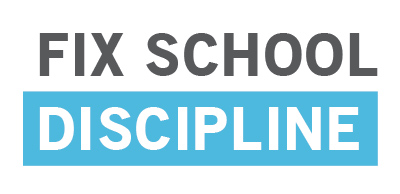Report Says California School Districts Need to Focus on Foster Youth in Budget Plans
 A report released today finds that while the Local Control Funding Formula was intended to help ensure that the unique needs of foster youth were addressed, in the first year of implementation few school districts developed goals or strategies specifically to help abused and neglected children improve attendance and avoid suspension, expulsion, and encounters with law enforcement on campus.
A report released today finds that while the Local Control Funding Formula was intended to help ensure that the unique needs of foster youth were addressed, in the first year of implementation few school districts developed goals or strategies specifically to help abused and neglected children improve attendance and avoid suspension, expulsion, and encounters with law enforcement on campus.
Research shows that foster youth experience far more school disruptions and exposure to trauma than other students and, as such, require trauma-informed strategies and coordinated action by public agencies to remove barriers that push them out of school. Because their unique needs are not being met, California foster youth are less likely to graduate high school than students from families with low incomes, English learners, and students with disabilities.
In 2013, the California Legislature approved the Local Control Funding Formula, which requires school districts to analyze and address the needs of foster youth. Fostering Educational Success found that few districts with the largest numbers of foster youth had analyzed or addressed their “school climate” or attendance needs, including reducing the impact of punitive exclusionary discipline and supporting the social and emotional well-being of foster youth.
“Foster youth in California are disproportionately subjected to suspensions, expulsions and contacts with the juvenile justice system, all of which compound and exacerbate the trauma most have already experienced,” said Laura Faer, Statewide Education Director for Public Counsel and co-author of the report. “Improving school climate for foster youth means putting a stop to school removals and referrals to police and developing a school environment that supports their social, emotional and mental health. Developing a positive and trauma-informed school environment must be a top priority this year for districts that serve foster youth.”
Under the Local Control Funding Formula, districts with high needs students, including foster youth, English Learner, and low-income students, received additional funding to enable them to improve these students’ educational outcomes in eight priority areas, including school climate. Fostering Educational Success reviewed the Local Control Accountability Plans of the 64 California school districts with more than 150 foster youth enrolled. Those 64 districts account have 55% of the foster youth in the state enrolled in their schools. The report found:
• Few school districts identified suspension reduction goals and actions unique to foster youth. Only one district, Los Angeles Unified, identified baseline suspension data for foster youth.
• Only one district, Temecula Valley Unified, identified a goal specifically addressing the foster youth expulsion rate.
• Few school districts identified unique attendance-related goals and actions for foster youth. Only two school districts, Sacramento City Unified and Los Angeles Unified, identified baseline attendance rates for foster youth.
• A number of districts spent the same or more on school-site law enforcement officers and equipment as on research-based, whole-school strategies for creating a positive and supportive school climate.
In sum, very few districts analyzed the needs of foster youth or created specific strategies for addressing their challenges, which include barriers to enrollment, lack of transportation, disruptive school changes, multiple, disconnected system players, absence of a single and constant adult supporter, and exposure to high levels of trauma, all of which severely impact learning and behavior. However, in response to the new law and the efforts of organizations calling on and working with districts to prioritize school climate improvements, a large number of districts articulated promising overall school climate approaches:
• The vast majority invested in research-based alternatives to harsh discipline practices, such as Positive Behavior Interventions and Supports, Social Emotional Learning, and Restorative Justice/Practices.
• A majority set goals to keep more students in school by improving overall attendance rates and reducing overall suspension and expulsion rates.
Fostering Educational Success also highlights a number of districts that are leading the way with creative strategies and investments and a vision for addressing the unique needs of foster youth: Los Angeles Unified School District is one these districts. Public Counsel was a member of the Coalition for Educational Equity for Foster Youth, which worked closely with Los Angeles leaders to establish strategies and resources specifically for foster youth in the LCAP.
“Some districts may not have felt ready to address the needs of foster youth in their Year 1 LCAP because they lacked education outcome data specific to foster youth,” said Martha Matthews, Children’s Rights Project Director and a founder of the Coalition for Educational Equity for Foster Youth. “But now that data is readily available, and shows disproportionate rates of attendance problems, suspension and expulsion, districts should use this year’s LCAP update as an opportunity to address the unique educational challenges faced by foster youth – such as school changes, trauma, and lack of educational support from the adults in their lives — and create research-based strategies to keep foster youth in school and on track for long-term educational success.”
Fostering Educational Success was co-authored by Laura Faer and Marjorie Cohen.
![]() Fostering Educational Success: Download the full 34-page report (pdf)
Fostering Educational Success: Download the full 34-page report (pdf)

